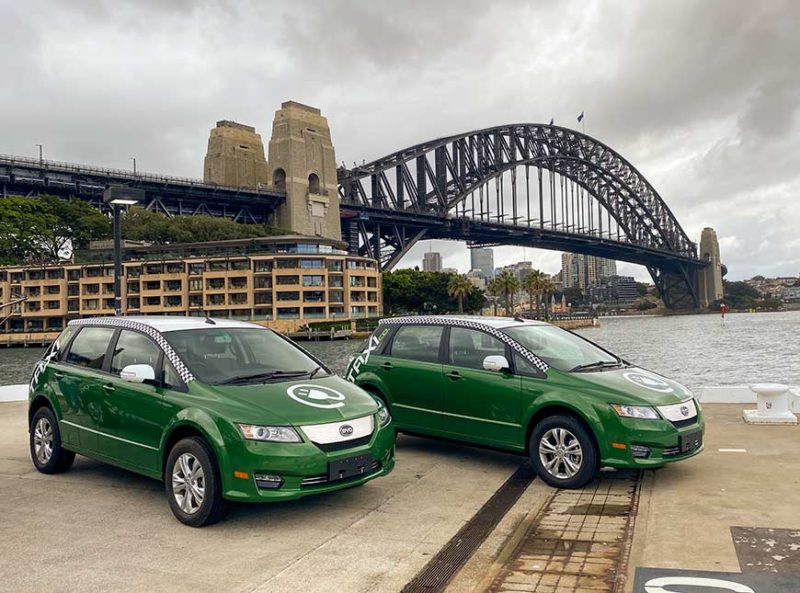The Sydney City Council is poised to approve one of the most significant local government electric transport options on Monday evening, when th Electrification of Transport in the City strategy and action plan is put to a vote.
The plan, which has been in draft form since October last year, aims to reduce transport emissions and improve air quality in the harbour city. Its primary focus is get dirty vehicles out of the city, a focus that has been top of mind for cities in Europe and the US.
“Our community has told us they want to respond to climate change,” the document says.
“They want a city with improved air quality, and reduced emissions including carbon dioxide (C02), NOX and noise, especially in high density and high activity areas. They want fewer cars and less congestion and for vehicles to be electric. They want more public transport, walking and cycling.”
The council’s plan will also require all new apartment buildings to accommodate electric vehicle chargers in car spaces and will look to retrofit existing residential blocks with charging stations. It will also support EV chargers at shopping centres, petrol stations and elsewhere.
But it also stresses that vehicle electrification is only part of the solution and that “the city’s anticipated growth requires a shift away from private vehicles, which have high emissions and require significant space for movement and for parking when not in use.”
Walking, biking, public transport and EVs
The plan states “The biggest impact we can have to reduce transport emissions is to facilitate a shift to walking, cycling and public transport.”
In an opinion piece published in the Sydney Morning Herald on Monday, Sydney City Mayor Clover Moore reiterated the council’s approach:
“We can’t expect electrification of vehicles to be the silver bullet. If we simply swap internal combustion vehicles for EVs we’ll have done more to save the car industry than the planet.
“That’s why our first priority is creating a city for walking, cycling and public transport – this is the most effective way to reduce emissions from transport. We must improve accessibility while reducing the amount of driving that is necessary.” said Clover Moore.
Learning from the countries that do it right
Anyone who’s been to countries like Denmark or the Netherlands knows just how easy (and pleasant) getting around a city can be when walking and cycling are prioritised.
Street Films Community, who made the short documentary Nijmegen: The City That Tamed Cars So People Can Walk & Bike Where They Please says:
“The car-free centre of Nijmegen is full of street life. Kids play and ride bikes without giving it a second thought. People just don’t have to worry about cars. Nijmegen has accomplished this by devising a system where essential motor traffic, like buses and deliveries, has access to central city streets, but other vehicles do not.”
In the city centre, cycling accounts for nearly 60 percent of trips, according to Sjors Van Duren, program director of Velo-City.
And there’s really no reason why Australian cities can’t do the same. Sure Dutch cities are quite flat but with the rise of e-bikes hills don’t matter as much as they used to. What’s key is building proper infrastructure like separated bike lanes so that people feel safe enough to ride a bike.
Some cars are needed but these should be all electric
Clover More said “Of course, some people are not able to walk, ride a bike or use public transport easily, and we will continue to need service and delivery vehicles. Electrification of high-impact fleets and private vehicles will help complete the journey to net zero transport.”
To encourage the switch to EVs Sydney City Council will increase access to public charging. The council will encourage the uptake of charging stations at places like supermarkets, petrol stations and other parking garages.
“We are also working with Ausgrid to trial low-impact on-street charging – plug-in cables installed on electricity poles – in suburbs with limited off-street options,” Moore said..
The Council’s plan will also require all new apartment buildings to accommodate electric vehicle chargers in car spaces and look to retrofit existing residential blocks with charging stations.
Sydney City Council’s plan will come with a big public health bonus
If Sydney’s Council achieves its plan to reduce petrol and diesel traffic in the city it will have the massive positive side effect of improving the health of all Sydneysiders.
A recent world first study using real-world data by the University of Southern California found that even even at fleet penetration rates as low as 2%, electric vehicle uptake results in better air quality and better health.
The study found postcodes that saw an increase of zero-emission vehicle fleet penetration of 20 per 1000 (just 2%) saw a measurable drop in annual average NO2 (for context world leading Norwegian ZEV fleet penetration is now over 20%).
This drop in NO2 was also correlated with a 3.2 % decrease in annual asthma-related emergency department visits.
If the remarkable results in the Californian study come from just a 2% displacement of petrol and diesel cars, imagine what can be achieved with a focus on good public infrastructure promotes cycling, walking and EV charging.

Daniel Bleakley is a clean technology researcher and advocate with a background in engineering and business. He has a strong interest in electric vehicles, renewable energy, manufacturing and public policy.

